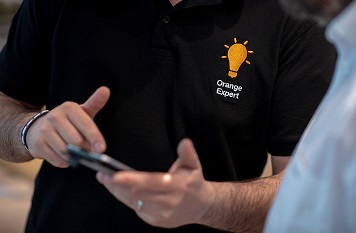From the inside out – eSignature
Published: July 20, 2020
Electronic signature, a new trend?
The first forms of electronic signatures appeared back to the early 2000s, with the creation of the worldwide known DocuSign in 2003. The topic of electronic signature has gained popularity pretty quickly. However, the need was amplified by the quarantine due to the Covid-19 pandemic. Nevertheless, even though this dreadful event occurred, it has been considered – on a global scale – as a lever of adoption for the future of the signature.
Since the usage starts to meet the standards, it is therefore the right time to consider the adoption of this technology!
Sounds great, but is it safe?
Let’s first define what an eSignature truly is: “An electronic signature, or e-signature, refers to data in electronic form, which is logically associated with other data in electronic form and which is used by the signatory to sign. This type of signature provides the same legal standing as a handwritten signature as long as it adheres to the requirements of the specific regulation under which it was created”.
One of the security technologies used in e-signature is a cryptographic implementation of electronic signatures (Digital Signature). This brings higher security because such implementation allows to clearly identify the signatory, to prove the integrity of a document, to provide many information about the setup of a contract (timestamp, etc.). Therefore, Digital signature are used as a proof of authenticity, data integrity and non-repudiation of communications conducted over the Internet.
The adoption phase is skyrocketing!
Today, a lot of people are promoting this 2.0 signature. This was the case in 2018. Larry Alton listed, in an article on Inc.com, the reasons why businesses should use the electronic signature:
- Simple and Intuitive
- High Level of Security
- Convenient
- Faster Turnaround
- Lower Cost
eSignature transactions have ballooned from $89 million to $754 million in just five years. Digital signatures is already broadly used in Business: Financial industry, Governments, Healthcare, Manufacturing… it is on its way up!

What about Orange?
The eSignature is the first step in the DigiContrat project, the digitisation of the internal and external contractualisation process, which began almost a year ago at the Fixed Wholesale Sales Department, to give concrete expression to one of the objectives of Orange’s strategy as a responsible player: to reduce the environmental footprint linked to its activities.
The DocuSign application, which will be fully integrated into the company IT through APIs, allows a contract or purchase order to be signed electronically from a PC, tablet or mobile device.
The results: time savings in the signature workflow, reduced paper usage, and reduced postal transports. In the long term, the workflows for checking and validating contracts and their automatic archiving will also be digitised. The figures are impressive: more than 2,000 contracts concerned per year, representing more than 80,000 pages of paper saved and a 20-minute reduction in processing time for each contract!
“A real vector of acceleration for a responsible and environmentally friendly business” for Sophie Morice, sponsor of this project.
The first customer of the operator Sales Department has just successfully used this new electronic signature method, which also supports the digital transformation of all our customers in the corporate segment and thus contributes to making Orange Wholesales France the preferred wholesaler for operators!
Explore the links below:
C’est parti pour la signature électronique des contrats ! – Orange Wholesale France
5 Reasons Your Business Should Use Electronic Signatures in 2018 – Inc
Electronic signature – Wikipedia
Digital Signatures: Why you should sign everything – Security Boulevard
47 Essential e-Signature Statistics – Finances Online



